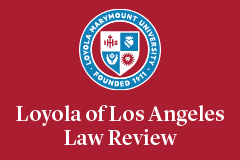Abstract
Remedies for civil rights violations are only practically available where government officials choose to empower institutions that can protect those rights. When the Civil Rights Section (CRS) of the U.S. Department of Justice was formed in 1939, almost no federal civil rights law or institutional capacity existed to protect civil rights. This Article uses citizens' letters to the CRS to explore the politics of the CRS's limited and experimental strategy of using litigation to expand federal civil rights protections. Although the scope of civil rights law has expanded greatly since the inception of the CRS, the CRS experience may still indicate that government attorneys typically avoid combining a litigation strategy with a broader appeal for public support. Perhaps the larger lesson we can learn from the CRS is that work that occurs within branches of the government may not produce meaningful and lasting institutional change; rather, campaigns that enlist outsiders to take part in broader processes of constitutional politics may be needed to effect systemic change of this kind.
Recommended Citation
Geroge Lovell,
Imagined Rights without Remedy: The Politics of Novel Legal Claims,
44 Loy. L.A. L. Rev. 91
(2010).
Available at: https://digitalcommons.lmu.edu/llr/vol44/iss1/5


